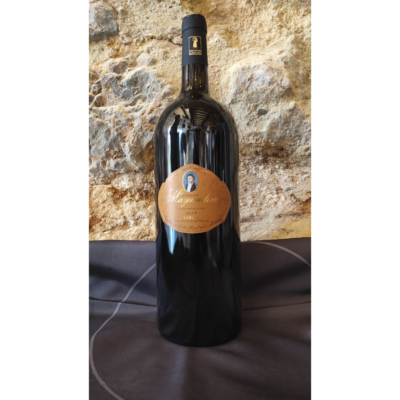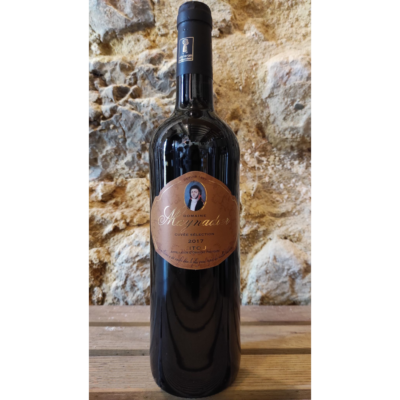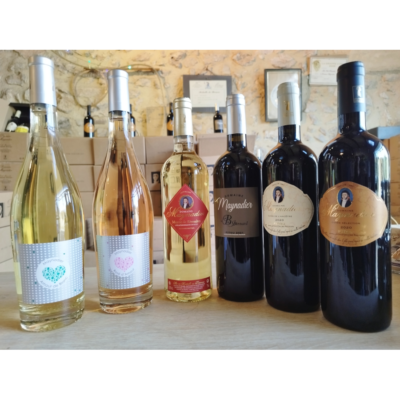The appellation area of the AOC Corbières – the largest in the Languedoc – covers 17200 hectares from the gates of Carcassonne to the ponds of Leucate and Narbonne to the foothills of the Pyrenees at the foot of the Black Mountain. It includes 11 different terroirs and produces red, rosé and white wines.
The prehistory of the Narbonne region
Before the Roman conquest, part of the Aude territory was occupied by the Elisyques, a people of Iberian origin. They are credited with the creation of the city of Narbonne with settlements around the hill of Montlaurès.
It is however the Greek merchants who cross the region constantly that are at the origin of the introduction of the vine.
In 120 BC, the Romans founded Narbo, their first colony in Gaul. Thanks to the already very favorable climate at the time, they began to cultivate vines on a large scale. The whole region of Narbo was quickly covered with vineyards and it can be considered that this is the cradle of wine in Gaul.

Successive invasions
With the decline of the Roman Empire and the barbarian invasions which follow one another, the vine remains however a very important culture and the wine is omnipresent in the testimonies relating this part of the history.
At the end of the 5th century, Narbonne was attached to the northernmost province of the Spanish kingdom conquered by the Visigoths. Then the local governors under the Carolingians claimed ownership. Finally, a viscounty lineage in partial autonomy took over the reins.
Narbonne in the Middle Ages and the attachment to France
In the Middle Ages, Narbonne was a metropolis of great importance, both intellectual, religious and spiritual. It was a dynamic and commercial city.
The Christian region entrusts its monks with viticulture, who take it very seriously and improve the techniques. The abbeys of Lagrasse, Caunes-Minervois, Fontfroide and Saint Hilaire became productive and quality wine centers.
The Cistercian abbey of Fontfroide even became the most prosperous in the south of France. Two lords shared power in Narbonne until the end of the Middle Ages: the archbishop and the viscount.
Even before the Inquisition, Narbonne was the Catholic headquarters of the crusade against the Cathars, in which the local bishops participated. The Cathars had to take refuge in the most remote castles of the region but there were few survivors.
Narbonne was definitively attached to the kingdom of France at the beginning of the 16th century. The city became the most important stronghold in the region.

The creation of the Canal du midi
In the 17th century, the creation of the Canal du Midi revitalized the region and the vines gained even more ground
In the 19th century, the development of viticulture was even more spectacular, with the doubling of the area under vines in the Narbonne region between 1852 and 1878. The cultivation of cereals and olive trees, as well as the breeding of sheep, were abandoned to devote themselves to the vine.
With the advent of the train, Narbonne became a nerve center of the wine industry.

Time for revolt
At the end of the 19th century, the region experienced a crisis of oidium, then phylloxera. The numerous winegrowers of the region set up a commune in 1871, inspired by the one in Paris, to oppose Napoleon III. It was quickly suppressed but the revolt was still brewing.
Ernest Ferroul, the doctor of the poor and mayor of Narbonne, supported the revolt of the winegrowers which broke out in 1907. A defense committee was set up in the four departments of the Aude, the Pyrénées Orientales, the Hérault and the Gard. The confrontations with the authorities were violent, with many people injured and a few killed.
In September 1907, Ferroul created the Confédération Générale des Vignerons. The small owners begin to group together and create cooperative wineries to overcome the crisis.
Since the beginning of the century, the winegrowers of the Corbières region have definitively chosen to privilege quality over quantity. In 1935, Joseph Capus invented the concept of the AOC whose process was momentarily interrupted by the Second World War.
It is the INAO which is in charge of the appellations and, in 1951, the wine of Corbières is recognized as VDQS – Vin de Qualité Supérieure – then as Appellation d’Origine Contrôlée on December 24, 1985, for the red, pink and white wines.




